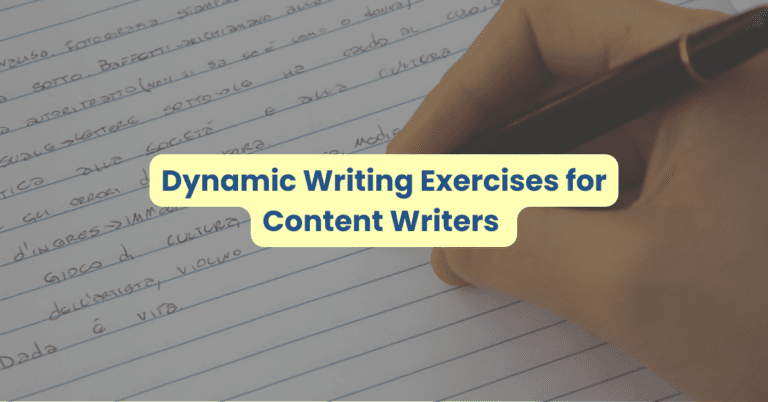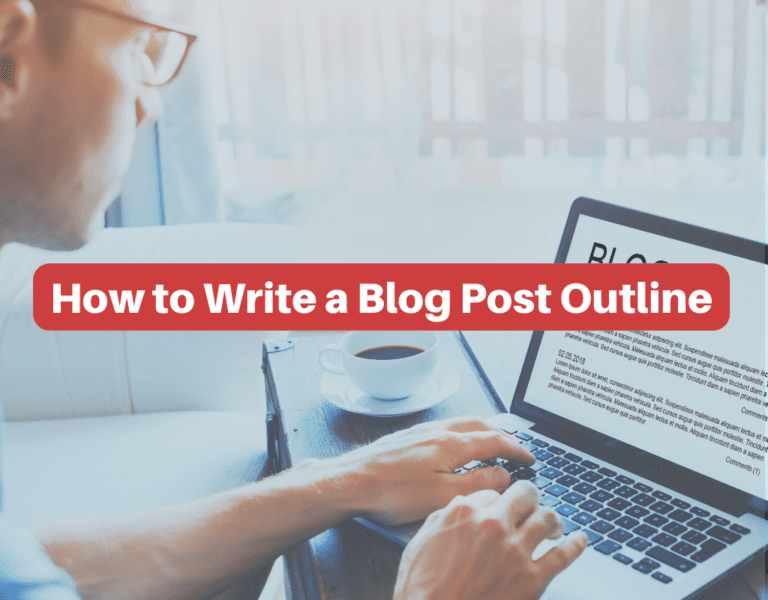Are you struggling to write plagiarism-free content?
You may feel confused about what it means, especially since different colleges, institutions, and online publications have different rules for what makes content plagiarism-free.
In this post, I’ll demystify plagiarism in writing.
You’ll learn what it means and how to avoid it in your writing. Keep reading to learn how to write better, express your original thoughts, research well, and share what you find without plagiarising from others.
Please note that you should go through every section to fully understand the complexities of plagiarism. By being aware of what it is and its impact, you’ll be sure to avoid making critical mistakes.
What is Plagiarism?
The easy explanation of plagiarism is copying and using other people’s work and not giving credit for it.
It doesn’t matter if you ‘borrowed’ some writing from a school kid’s paper online or if you used a few paragraphs from an out-of-print book.
If it’s copied, unedited, and uncredited, it’s plagiarised.
In some universities, your work is considered plagiarised if you even use three words in a row that come from a relevant source and don’t use attribution.
It’s also possible to plagiarise yourself by copying your own work without crediting the original, earlier source.
Also, simply referring to others’ work without adding your insights can also be seen as copying – it depends on the work you do, the place you’re submitting your content, and so on.
What Happens if You Plagiarize?
It depends on the situation. However, the consequences are always negative.
In academic institutions i.e. school, college, universities, and research institutes, plagiarism is severely punished.
A person can lose their seat in a school, get kicked out of a program, lose their job, their license, or something else vital to their careers.
These consequences can be devastating since it means a loss of money spent on education and other expenses.
If you plagiarise in a low-stakes setting, you might get a warning or called out by others.
And in situations where you write content for websites, plagiarising your posts will result in a ban. Your content will get removed and you may struggle to work with such places again.
In all cases, plagiarism will damage your reputation.
And you’ll find it hard to win trust or grow in your field if you’re caught plagiarising.
What Happens if You Unintentionally Plagiarize?
It doesn’t matter if you unintentionally copy an idea or work from someone else.
If you’re caught, you face the consequences/punishment depending on the situation.
Is It Plagiarism if You Think Something on Your Own but Find Someone Did It Before?
Unfortunately, Yes. Especially if you publish it in your name without acknowledging others.
Even if you came to a conclusion on your own, had an original idea, or came up with a phrase entirely from thinking, it’s considered plagiarism if there’s a record of someone else doing it before you.
This is why it’s important to do your research before you submit a paper, book, or any content.
We’ll look at the steps you can take to avoid plagiarism in your work and submit fully original content.
How You Can Write Plagiarism-Free Content
Here’s a breakdown of ways to ensure you avoid plagiarism.
- Start with research: When writing about a topic, do thorough research and look for information from various sources. The more information you gather, the more you’ll know about what exists about the topic.
- Record your sources and information: As you go along, note down the sources where you get information. This will help you keep track of your research and make it easier to reference other people’s work in your own content.
- Brainstorm: Once you have enough details from various resources, use them as a base to generate new ideas on the same topic. Don’t be afraid to think outside the box. And don’t just repeat what you learn, look for gaps, and different perceptions, and combine the knowledge you picked up.
- Present sources for all facts and statements: If you state a fact like ‘The global percentage of smartphone users is 70%’, you must have a source for it. Likewise, if you make any definitive statements, make sure you present a source. This is citing.
- Cite quotations or quotes: If you use a direct quotation from someone, cite it. It could be in the form of ‘As author X says’ or a footnote link to the original source. This is called quoting and helps readers understand where you got information for your content.
- State your own thoughts and findings: Add your own insights and ideas to the pieces you write. Don’t be afraid to think differently from other writers and make sure to explain why you have a different view if need be. To avoid writing a poor paper, you must do more than just collect and present information – you should also explain what you find.
- Cite Your Sources Appropriately: Use the correct citation format based on your university or publication guidelines. There are many different citation styles, and you should use the right ones. Also, citing books is different from referring to websites. It’s important to understand the nuances of proper citation.
- Check Your Work: Once you have written your paper, look for similarities to other sources. You can use an online plagiarism checker to scan the piece and highlight any copied words or phrases.
- Don’t ‘Spin’ Your Writing: Don’t try to ‘spin’ or simply rephrase an old piece of writing. It’s a form of plagiarism and doesn’t yield the results you want. Instead, look for new sources, think differently about the topic, take notes on what you read and add your own voice to create fully original content.
Next, we’ll look at how to use tools to make this list of to-dos easy.
Use Tools to Avoid Plagiarism
If it seems like avoiding plagiarism is hard, then don’t worry.
Today, there are many tools to make the process easy.
There AI-writing tools that will help you do research, find sources, add citations, check for grammar, and avoid plagiarism.
Let’s take a look at the best new tools to avoid plagiarism in your writing.
Plagiarism Checkers
Let’s start with plagiarism checkers and then check out how to use paraphrasers and citation generators to avoid plagiarism.
A plagiarism-checking tool is not just for professors or school teachers to check the authenticity of students’ work.
Smart students, researchers, and content writers also use them to double-check their work for any unintentional plagiarism.
There are many tools you can use for this purpose. You can read in detail about the best plagiarism checkers in this post I wrote. You should know that most plagiarism checkers are paid, at least the good ones are. They have to be because they rely on paid databases and tools to cross check your work.
Here are some of the best plagiarism checkers you should know:
- QuillBot Plagiarism Checker: QuillBot’s plagiarism checker is one of the best premium checkers there is. It’s highly affordable and the platform has other powerful features to support your writing.
- Grammarly: Grammarly also offers plagiarism checking with its grammar checking features. It’s available with a premium plan which is great if you want a comprehensive tool to check your work.
- ProWritingAid: This tool helps you improve the quality of your work and will accurately check and highlight content that is plagiarised.
- WordTune: This is one of my favorite writing tools and offers plagiarism-checking options with its paid plans.
- Copyscape Pro: Copyscape is a top academic plagiarism checker with a simple user interface. Use it for cheap and reliable checks to avoid plagiarism.
By using tools to help you rephrase your writing, add citations appropriately, and check for plagiarism, you’re sure to pass any plagiarism test with flying colors.
Paraphrasing Tools
Paraphrasing tools are AI-driven editing tools that will rephrase your content.
Use a paraphrasing tool to improve your writing and make it sound more academic, fluent, simple, expanded, or match whatever you want.
However, you shouldn’t copy and paste quotes or material from a source directly into a paraphrasing tool. The tool will rewrite everything but there’s a good chance that plagiarism checkers will detect patterns and mark your work as plagiarized.
What you should do is write your information down, add your insights, and then put it into a paraphraser AI tool. The output such a paraphraser generates will give you ideas on how to improve your writing.
Here are some of the best paraphrasing tools you can use:
- QuillBot – Free. I have a full review of all of QuillBot’s features here. You can paraphrase up to 125 words at once. And you’ll need the premium edition to rewrite more.
- Grammarly – Free. If you have the Grammarly tool, use its floating widget tool (with the Chrome extension) to rewrite or paraphrase content according to your needs.
- Wordtune – Free. But you’re limited to paraphrasing a sentence at a time. Also learn about all of Wordtune’s features here.
Citation Generators
I remember when I had to manually add citations when I wrote my master’s thesis.
It was a struggle to find information, record sources, and format citations according to my university guidelines.
Today, this task is easier than before.
You can use citation generators to add sources and cite ebooks, papers, physical books, and websites appropriately.
For example, Wordtune will research information right on its editor! You can find academic papers and online sources by just writing what you want and clicking on ‘Spices’.
Similarly, QuillBot offers similar research options for students, teachers, researchers, and academics.
These tools will also add proper citations in your chosen style. This will save you hours of work, and make adding sources and references very convenient.
Some other Citation Generators you can use are:
- Citation Machine
- Easybib
- Zotero
Write Original Content Easily
In today’s fast-paced world of content creation and academic writing, being original and authentic is your ticket to success.
And avoiding plagiarism is your ‘get out of jail free’ card.
This post has covered the key points you should know about plagiarism so you can avoid it in your work.
You also learned how to use AI tools to write plagiarism-free content.
So, make sure to use the tools mentioned above and develop your own unique content that’s free from any plagiarism.
When done correctly, you can be proud of your work knowing it stands on its merit and is genuinely yours.
Good luck!







